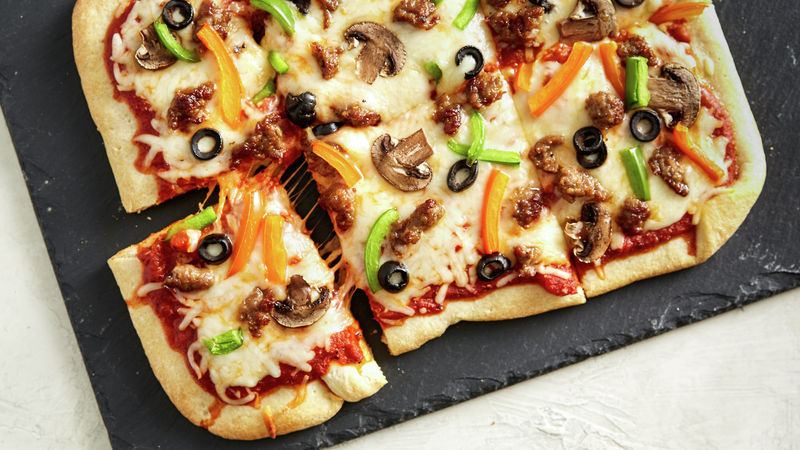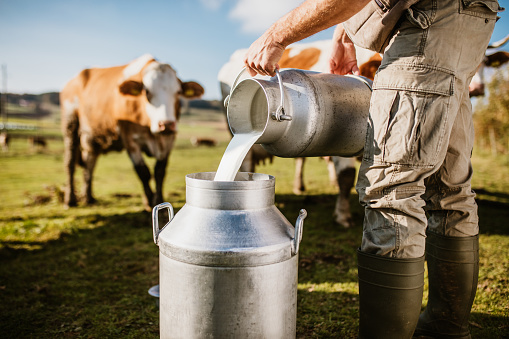Pizza is a food that people all around the world adore. Even while it’s convenient to order pizza from your favorite restaurant, there’s something unique about creating your own pizza masterpiece at home. The skill of stacking is one of the secrets to excellent pizza. In this step-by-step tutorial, we’ll examine the techniques for building a delectable pizza, from the dough’s base to the savory toppings. By the end, you’ll be equipped to construct the personalized pizza that will make your taste senses dance with joy.
Table of Contents
Step 1: Prepare Your Dough
You need the dough as a beautiful canvas before you can begin building your pizza. Either from home or from a store, you may make your own dough. Make sure it is well-kneaded and rolled out to the correct thickness if you are preparing it yourself. Put it on a baking sheet or pizza stone that has been covered with parchment paper.
Step 2: Add Your Sauce
The base of your pizza is the sauce. Spread your preferred pizza sauce liberally and evenly over the dough using a ladle. Avoid over saucing your pizza as this can result in soggy pizza. To add a special touch, consider barbeque sauce in addition to traditional tomato sauce, pesto, alfredo, and more.
Step 3: Cheese, Please!
Add the cheese at this point. Most pizzas are typically made with shredded mozzarella, but you can get creative by mixing cheeses like cheddar, provolone, or parmesan. In order to ensure that every bite has a taste of the delicious cheese, sprinkle it evenly over the sauce.
Step 4: Build Your Toppings
You can express your imagination in this area. Put your preferred toppings on the pizza in layers. Make sure the ingredients are placed equally whether you favor classic pizza toppings like pepperoni, mushrooms, and bell peppers or prefer more unusual options like arugula or prosciutto.
Step 5: Finish with Herbs and Seasonings
By using fresh herbs like basil or oregano, you may improve the taste profile of your pizza. If you want it spicy, add some crushed red pepper flakes for a little more spice. Extra-virgin olive oil can also be used to give a final flavoring layer.
Step 6: Bake to Perfection
Set the oven to a high setting (about 475°F or 245°C). Pizza should be baked in the oven until the cheese is bubbling and gently browned and the dough is golden. Normally, this takes 12 to 15 minutes, but watch it carefully to prevent overcooking.
Step 7: Slice and Serve
Allow your pizza to cool for a few seconds after taking it out of the oven before cutting. To cut the pizza into the necessary number of slices, use a pizza cutter or a sharp knife. With a smile, present your created creation.
FAQ’s About layer Pizza
Is handmade pizza dough preferable than store-bought dough?
If you’re pressed for time or just like the ease of store-bought pizza dough, you can use it without a problem. Although homemade dough can be slightly more tailored in terms of flavor and thickness, many versions available in stores are extremely wonderful.
How do I stop the sauce from making my pizza soggy?
To prevent a soggy crust, make sure your pizza sauce is not too liquid and distribute it thinly and evenly over the dough. Another way to assist build a barrier and minimize sogginess is to pre-bake the dough for a short period of time before adding the sauce and toppings.
What is the perfect pizza cheese-to-topping ratio?
The proportion of cheese to toppings is a matter of taste. A common rule of thumb is to use just the right amount of cheese to give the dish a wonderful, gooey texture without overwhelming the other components. The key is balance.
How do I stop the crust of my pizza from burning while the toppings cook?
Use a pizza stone or a baking sheet lined with parchment paper, and make sure your oven is properly prepared to avoid the crust burning. To prevent the crust from coming too close to the heating source, you may also try lowering the oven rack.
Can I create a pizza that is vegan or gluten-free?
Definitely! There are alternatives for gluten-free pizza dough, and you can make a fantastic vegan pizza with dairy-free cheese and plant-based toppings. Just make sure to read the labels to make sure the components are suitable for your diet.
What inventive pizza toppings are there for individuals who want to get creative?
Using your imagination while choosing your pizza toppings is entertaining! Think of adding toppings like roasted garlic, figs, arugula, artichoke hearts, caramelized onions, or even a sprinkle of truffle oil. It is possible to create some delicious combos by combining sweet and salty flavors.
Can pizza dough be frozen for later use?
Pizza dough can be frozen. The dough should be divided into sections after being made or purchased, wrapped securely in plastic wrap or aluminum foil, and put in a freezer bag. The dough should be defrosted in the refrigerator overnight before being brought to room temperature and used.
How should I reheat leftover pizza to keep it fresh?
Use an oven or toaster oven to reheat it while maintaining its crispiness. It should be baked for about 5 to 10 minutes, or until it is well cooked and the crust is crispy, in an oven that has been warmed to 375°F (190°C).
Conclusion
Layering is a key step in the process of making the ideal pizza, which is considered to be an art form. You can make wonderful pizzas that are on par with the best pizzerias by following this detailed tutorial. Keep in mind to carefully prepare your dough, sauce, cheese, and toppings for it that will have everyone coming back for more. So be creative, put your hands to work, and have the delight of creating your own unique pizza at home.


